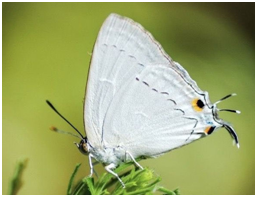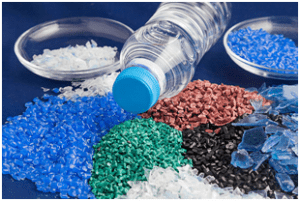INDIAN POLITY
1. WHAT IS A CURATIVE PETITION?
TAGS: PRELIMS PERSPECTIVE- GS-II- INDIAN POLITY
THE CONTEXT: Recently, Supreme Court told the Central Government that it cannot decide its curative plea seeking an additional Rs 7,844 crore from the successor firms of Union Carbide Corporation (UCC) for giving compensation to the victims of the 1984 Bhopal gas tragedy as a lawsuit.
THE EXPLANATION:
The concept of curative petition originated from the case of Rupa Ashok Hurra Vs. Ashok Hurra and another case (2002) where the following question arose before the court of law- ‘whether an aggrieved person is entitled to any relief against the final judgment/order of the Supreme Court, after the dismissal of a review petition.
What is a Curative Petition?
- A curative petition is the final and last option for the people to acquire justice as mentioned and promised by the Constitution of India.
- A curative petition may be filed after a review plea against the final conviction is dismissed.
- Objective: It is meant to ensure there is no miscarriage of justice, and to prevent abuse of process.
Criteria for admission:
- The court ruled that a curative petition can be entertained if the petitioner establishes there was a violation of the principles of natural justice, and that he was not heard by the court before passing an order.
- It will also be admitted where a judge failed to disclose facts that raise the apprehension of bias.
- The SC has held that curative petitions must be rare rather than regular, and be entertained with circumspection.
- A curative petition must be accompanied by certification by a senior advocate, pointing out substantial grounds for entertaining it.
Who hears Curative petitions?
- A curative petition must be first circulated to a bench of the three senior-most judges, and the judges who passed the concerned judgment, if available.
- Only when a majority of the judges conclude that the matter needs hearing should it be listed — as far as possible, before the same Bench.
- A curative petition is usually decided by judges in chamber, unless a specific request for an open-court hearing is allowed.
- It shall be open to the Bench at any stage of consideration of the curative petition to ask a senior counsel to assist it as amicus curiae.
- In the event of the Bench holding at any stage that the petition is without any merit and vexatious, it may impose exemplary costs on the petitioner.
ENVIRONMENT, ECOLOGY AND CLIMATE CHANGE
2. WHITE TUFTED ROYAL BUTTERFLY
TAGS: PRELIMS PERSPECTIVE- GS-III- ENVIRONMENT & ECOLOGY
THE CONTEXT: Recently, a team of butterfly observers and researchers have found White Tufted Royal Butterfly, a rare butterfly species at Kalliyad in Kannur district of Kerala.
THE EXPLANATION:
What is White tufted royal butterfly?
- White tufted royal butterfly is a rare butterfly species.
- It is protected under Schedule 2 of the Wildlife Protection Act.
- The wingspan of the butterfly is just 32-40 mm. Its larvae feed on Scurrula parasitica, a plant belonging to the Loranthaceae family.
- The species had been spotted in Agasthyakoodam in 2017 and the Shendurney Wildlife Sanctuary in 2018.
- Significance of finding: There were eight species of the butterfly. While two are common, the others are rare. Since we are able to get the egg, the life cycle of the butterfly can be documented.
- Threats: The survival of such rare species is under severe threat and steps should be taken to protect the hills.
ECONOMIC DEVELOPMENTS
3. GLOBAL ECONOMIC PROSPECTS REPORT 2023
TAGS: PRELIMS PERSPECTIVE- GS-III- ECONOMIC DEVELOPMENTS- REPORT AND INDEXES
THE CONTEXT: Recently, World Bank has released its latest report on Global Economic Prospects, outlining a slowdown in global growth due to a variety of factors including elevated inflation, higher interest rates, reduced investment, and disruptions caused by Russia’s invasion of Ukraine.
THE EXPLANATION:
The report warns that any additional negative developments, such as a resurgence of the COVID-19 pandemic or escalating geopolitical tensions, could push the global economy into recession, marking the first time in more than 80 years that two global recessions have occurred within the same decade.
Growth Projections
- According to the report, the global economy is projected to grow by 1.7% in 2023 and 2.7% in 2024. The downturn in growth is expected to be widespread, with forecasts in 2023 revised down for 95% of advanced economies and nearly 70% of emerging market and developing economies.
- Over the next two years, per-capita income growth in emerging market and developing economies is projected to average 2.8%, a full percentage point lower than the 2010-2019 average.
Impact on Developing Countries
- The report highlights that the crisis facing development is intensifying as the global growth outlook deteriorates. Emerging and developing countries are facing a multi-year period of slow growth driven by heavy debt burdens and weak investment as global capital is absorbed by advanced economies.
- This will result in a weakness in growth and business investment, compounding the already-devastating reversals in education, health, poverty, and infrastructure, as well as the increasing demands from climate change. In Sub-Saharan Africa, which accounts for about 60% of the world’s extreme poor, growth in per capita income over 2023-24 is expected to average just 1.2%, a rate that could cause poverty rates to rise, not fall.
Advanced Economies
- Growth in advanced economies is projected to slow from 2.5% in 2022 to 0.5% in 2023. Over the past two decades, slowdowns of this scale have foreshadowed a global recession. In the United States, growth is forecast to fall to 0.5% in 2023, the weakest performance outside of official recessions since 1970. In 2023, Euro-area growth is expected at zero percent, and in China, growth is projected at 4.3% in 2023.
Emerging Market and Developing Economies
- Excluding China, growth in emerging market and developing economies is expected to decelerate from 3.8% in 2022 to 2.7% in 2023, reflecting significantly weaker external demand compounded by high inflation, currency depreciation, tighter financing conditions, and other domestic headwinds.
- By the end of 2024, GDP levels in emerging and developing economies will be roughly 6% below levels expected before the pandemic. Although global inflation is expected to moderate, it will remain above pre-pandemic levels.
Investment Growth
- The report also offers a comprehensive assessment of the medium-term outlook for investment growth in emerging market and developing economies. Over the 2022-2024 period, gross investment in these economies is likely to grow by about 3.5% on average—less than half the rate that prevailed in the previous two decades.
- The report suggests a menu of options for policymakers to accelerate investment growth, such as establishing sound fiscal and monetary policy frameworks and undertaking comprehensive reforms in the investment climate.
PRELIMS PERSPECTIVE
4. HENLEY PASSPORT INDEX 2022
TAGS: PRELIMS PERSPECTIVE- REPORT AND INDEXES
THE CONTEXT: Recently, the Henley Passport Index released the global ranking of world’s passport according to the number of destinations their holders can access without a prior visa.
THE EXPLANATION:
- According to the index, the strongest passport is defined by the number of countries people with a passport can visit visa-free or visa-on-arrival. The top 10 strongest passports in the world are:
1. Japan (193)
2. Singapore/South Korea (192)
3. Germany/Spain (190)
4. Finland/Italy/Luxembourg (189)
5. Austria/Denmark/Netherlands/Sweden (188)
6. France/Ireland/Portugal/United Kingdom (187)
7. Belgium/Czech Republic/New Zealand/Norway/Switzerland/United States (186)
8. Australia/Canada/Greece/Malta (185)
9. Hungary/Poland (184)
10. Lithuania/Slovakia (183)
India’s Position in the Index
- India ranks 85th on the index, up two places from last year’s 87th position. Despite having the world’s fifth-largest economy, Indian passport holders can access only 59 destinations worldwide and only 6.7% of global GDP, of which India’s own GDP accounts for about half. Indian passport holders have lost visa-free access to Serbia.
- Starting January 1, 2023, Indian passport holders are required to apply for a visa to enter the country, unlike in the past when visa-free travel to the country for 90 days was allowed. Indian passport holders can travel visa-free to 59 destinations such as Bhutan, Indonesia, Macao, Maldives, Nepal, Sri Lanka, Thailand, Kenya, Mauritius, Seychelles, Zimbabwe, Uganda, Iran, and Qatar. Some countries require visa-on-arrival.
VALUE ADDITION:
What is the Henley Passport Index?
- The Henley Passport Index is prepared by London-based Henley and Partners, a global citizenship and residence advisory firm. The index claims to be the “original ranking of all the world’s passports” and is updated quarterly according to countries’ visa policy changes.
- It gathers data from the International Air Transport Association (IATA), which manages inter-airline cooperation globally. The index covers 227 destinations and 199 passports and compares the visa-free access of 199 different passports to 227 travel destinations. If no visa is required, then a score with value = 1 is created for that passport. The same applies if you can obtain a visa on arrival, a visitor’s permit, or an electronic travel authority (ETA) when entering the destination.
5. POLYETHYLENE TEREPHTHALATE(PET)
TAGS: PRELIMS PERSPECTIVE
THE CONTEXT: Researchers from the University of Cambridge, the United Kingdom have recently developed a system that can transform polyethylene terephthalate (PET) plastic waste and greenhouse gases into sustainable fuels and other valuable products using solar energy.
THE EXPLANATION:
- The researchers developed an integrated reactor with two separate compartments: One for plastic and one for greenhouse gases.
- The reactor uses a light absorber based on perovskite – a promising alternative to silicon for next-generation solar cells.
- Tests of the reactor under normal temperature and pressure conditions showed the reactor could efficiently convert polyethylene terephthalate (PET) plastic bottles and CO2 into different carbon-based fuels such as CO, syngas or formate, in addition to glycolic acid.
- The reactor produced these products at a rate that is also much higher than conventional photocatalytic CO2 reduction processes.
What is Polyethylene terephthalate?
- It is a condensation polymer of ethylene glycol and terephthalic acid.
- The by-product of the reaction is water so it is an example of condensation or step-growth polymerization.
- PET Plastic is a thermoplastic synthetic substance which malleable under heat and can be placed into nearly any shape.

